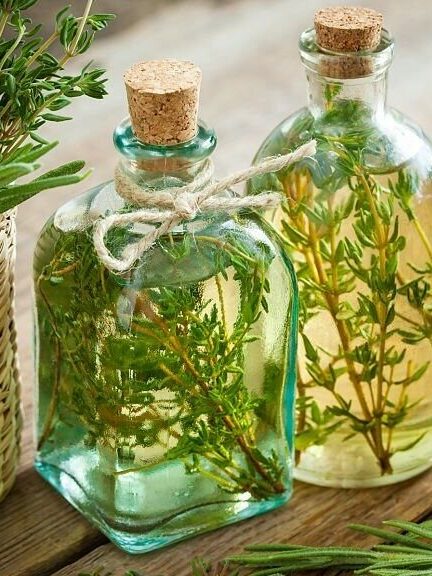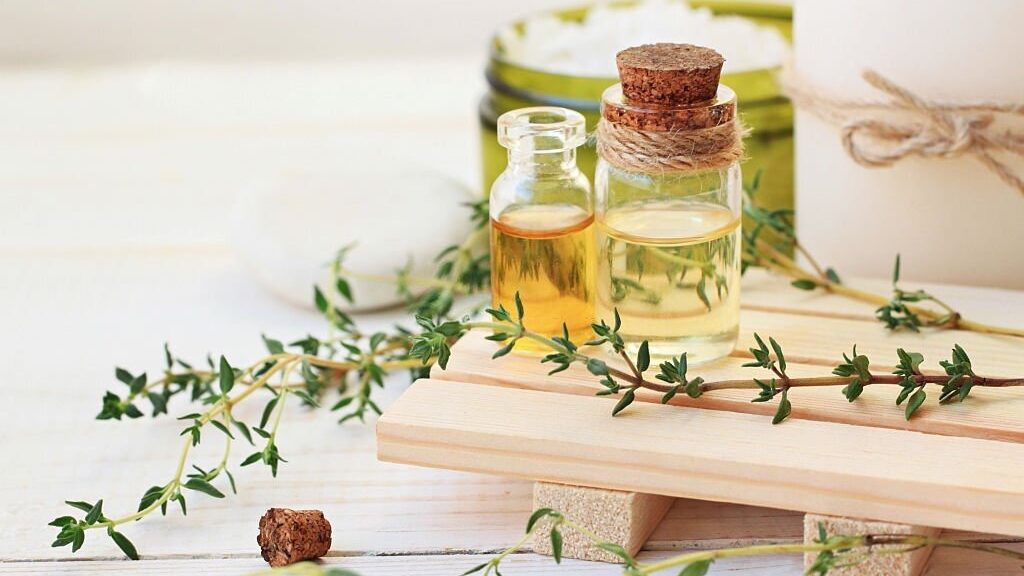Many types of herbs and flowers can provide a wide range of benefits to your body, both internally and externally. When used properly, they can deliver nourishing vitamins and minerals and often have antibacterial, antifungal, anti-inflammatory and antioxidant properties.
Making infused oils is a great way to put herbs and flowers to good use! These oils can be used directly on the skin and scalp or in recipes for soap, lotion, salve, chap-stick, face creams, makeup and bath salts. You can also use infused oils for culinary purposes! For example, you can infuse your olive oil with rosemary, garlic, basil or other culinary herbs for extra flavor!
Below are some popular methods of making infused oils. Although you can use fresh herbs and flowers for all strategies, it is best to use dried plants. Fresh herbs and flowers have a higher water content, which makes the oil decay faster.
Infused oils have a shelf life of up to a year or more, depending on the type used. If you want to extend the shelf life, you can add vitamin E oil in a concentration of up to 1% to extend the shelf life, but only do this with oils for external use!
Supplies for infusing oil:
- Dried herbs and flowers (Make sure they are 100% dry)
- Glass jar
- Oil of your choice
- Fine-mesh sieve
- Cheesecloth
Cold infused oils
This is the old-fashioned and traditional way of making infused oil. It can be used for culinary oil as well as body care. Make sure the herbs/flowers you use are safe for the purpose you are using them for!
- Put dried herbs/flowers in a clean, dry jar. Fill the jar about 3/4 full to leave room for the oil to cover the dried plants. You want at least 1 inch of oil to cover the plants.
- Fill the remaining space in the jar with your preferred oil. If the herbs/flowers rise above the surface of the oil at any point, pour more oil on top to ensure the herbs remain covered.
- Put the lid firmly on the jar and shake well.
- Place the jar on a sunny, warm windowsill and shake at least once a day.
- After 2-3 weeks, strain the herbs from the oil with a cheesecloth or sieve. Be sure to squeeze as much oil out of the herbs/flowers as possible.
- Pour into a clean jar or glass dropper bottle if you prefer.
- Label your jars with the date, type of oil and spices used.
- Store the oil in a cool, dark place.
If you prefer not to put your oil in direct sunlight, you can put a paper bag over the jar or put it in a cool dark place. This way, it does take a few weeks longer.
Warm infused oils
You can use this method if you need infused oil in a much shorter time frame. You will also need a double boiler and a kitchen thermometer.
- Put herbs/flowers in a double boiler and cover with organic oil, leaving at least an inch or two of oil above the herbs.
- Heat the herbs gently over very low heat (preferably between 56°C and 78°C for 1 to 5 hours) until the oil takes on the color and fragrance of the herb. Turn off the heat and allow the oil to cool.
- Once the oil has cooled, strain the oil through a cheesecloth. Squeeze well all the oil from the flowers/herbs used.
- Pack the oil into dry, sterilized glass jars of your choice.
- Label your jars with the date, type of oil and spices used.
- Store the oil in a cool, dark and dry place for up to six months.
Oil infused with alcohol (for external use only)
This is the fastest way to make infused oils because it takes only 24 hours. It has the advantage of being much less susceptible to contamination than oils infused by the other two methods described above. It cannot be used for culinary/medicinal purposes, only topically. You need organic whole grain alcohol such as Everclear or vodka, a blender and a heat-resistant glass bowl.
- Weigh about 30 gr of dried herbs/flowers.
- Use a blender, coffee grinder or ball mill and grind to a coarse (not fine) powder.
- Transfer the ground spices to a clean glass container of your choice.
- Measure out 30 ml of alcohol.
- Pour the alcohol into the glass jar with ground spices.
- Use a fork to mix, or put the lid on and shake to disperse the alcohol. It should have the consistency of fine earth or moist beach sand.
- Set aside for at least 24 hours to allow the spices to soften in the alcohol.
- Put the moist spice material in a blender.
- Add about 235 ml of oil, measured by volume or weight. Add more as needed to coat well and to make sure the spices move well in the blender.
- Blend until the blender jar is warm to the touch, about 5 minutes.
- Place a large strainer over a heatproof glass bowl. Line the sieve with cheesecloth or fine muslin cloth.
- Pour the herb-soaked oil through the strainer and use the cheesecloth or mesh cloth to squeeze out as much oil as possible from the herbs. The oil will keep for a year or more in a cool, dark and dry place.
Popular herbs and flowers for making oil infusions
- Chamomile
- Calendula
- Sage
- Thyme
- Oregano
- Peppermint
- Cornflower
- Rosemary
- Basil
- Echinacea
- Dandelion
- Lavender
- Rose
- Coin



